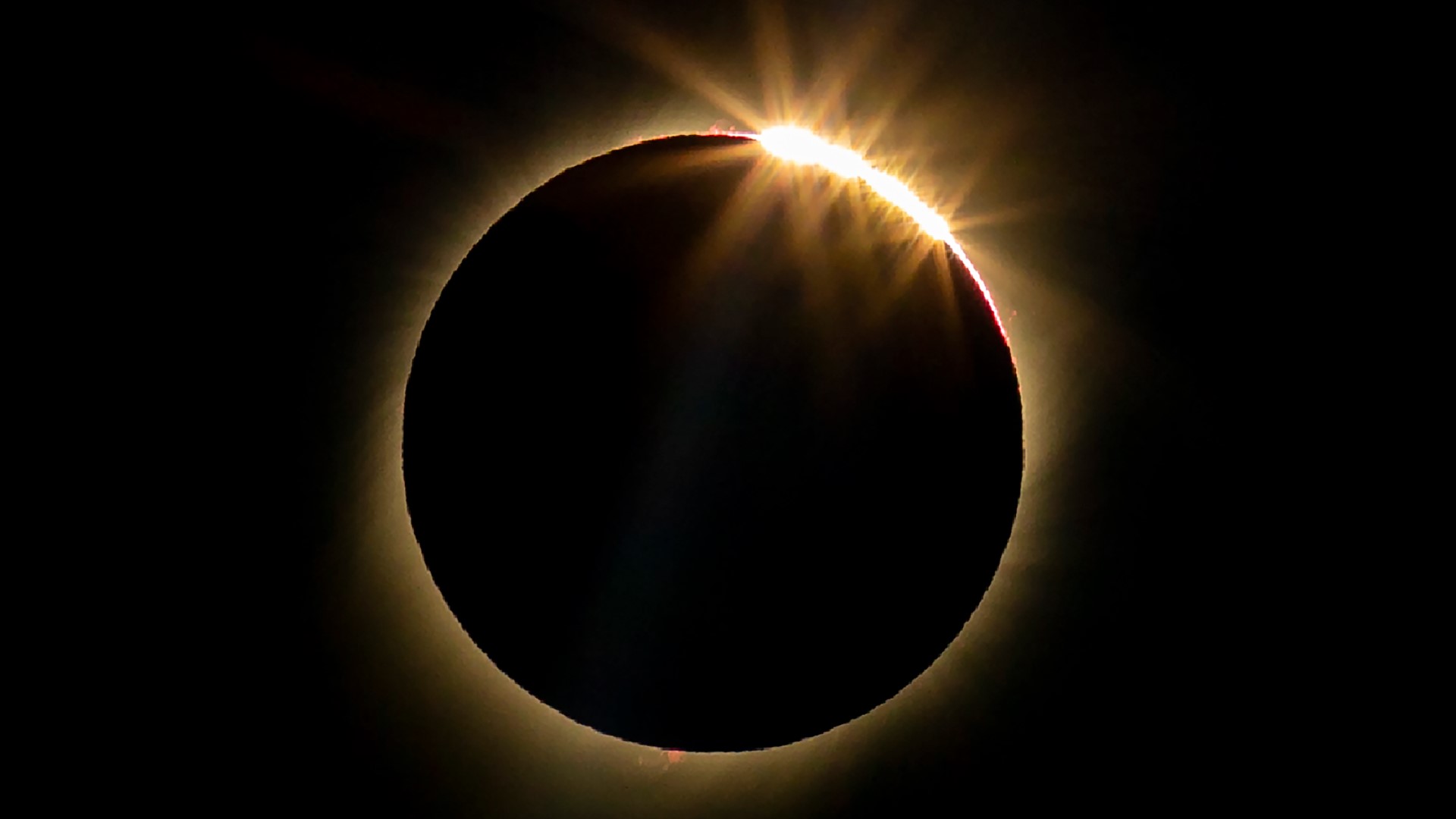TOLEDO, Ohio — Many Americans are preparing for a once-in-a-lifetime astronomical spectacle on April 8 as the total solar eclipse will pass over portions of the country. NASA is warning those who plan to watch the eclipse to have proper eye protection for solar viewing, but have you considered how the upcoming eclipse may impact your pets?
Regardless of what type of pet you have, the sun's rays can damage the retina of their eyes.
Staring at the sun, especially for a long duration of time, is harmful to humans and pets alike. The UV rays of sun exposure can increase the risk of blindness without proper protection. Sunglasses will not suffice, and protective eyewear with approved international ISO standards is necessary for both people and pets to safely view the eclipse.
If you're worried about your pet's eyes, staying indoors is the safest bet.
Pets instinctively know not to stare directly at the sun, and the sudden transition from light to darkness won't cause your pet to look at the sky. If you decide to stay home during the eclipse, the transition to totality won't instinctively trigger a reaction from your pet or cause him or her to stare directly at the sun.

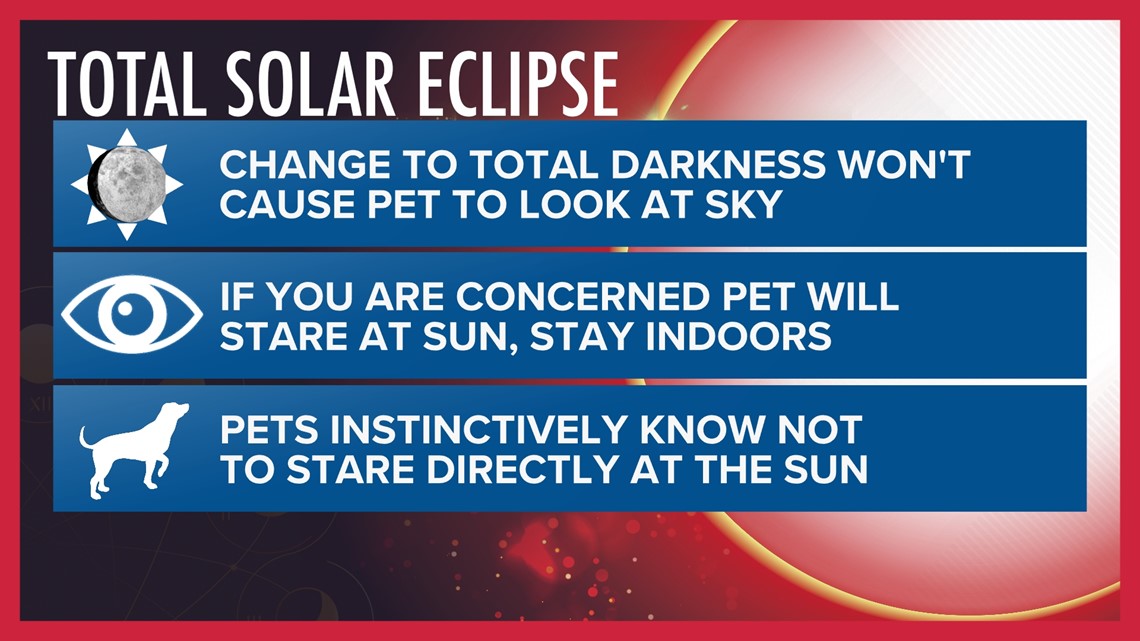
In general, the total solar eclipse will affect dogs much more significantly than cats. The biggest of these impacts will be not physical, but social.
Public parks, viewing parties and outdoor areas will be flooded with tourists and locals alike, and many people will bring their pets to watch the eclipse. The crowds on April 8 may trigger social anxiety in dogs, especially if your pet struggles with big crowds and congested areas.
Consider staying home during the eclipse if your dog has social anxiety.
In 2017, the path of totality stretched perpendicular to the 2024 path, spanning from the southeastern United States to the Pacific Northwest. In the state of Wyoming, which witnessed the 2017 total solar eclipse, 75% of tourists came from out of state.
On the other side of the country, South Carolina also experienced the totality of the 2017 eclipse. 1.6 million tourists flooded the state; 800,000, or 50% of them, came from out of state.
In Nebraska, roughly halfway between these other two eclipse viewing destinations, approximately 708,000 tourists traveled for totality with 87% of these flocking in from out of state. The 2017 total solar eclipse was Nebraska's most significant tourist event in history.
These numbers give you an idea of how significantly the 2024 total solar eclipse will impact the Buckeye State.
Data from 2017 suggests that at least half of tourists will come from out of state, crowding public areas. Many of these tourists will travel with their furry friends, so parks may be filled with dogs of varying social tendencies. If your dog acts out in public, exhibits aggressive or violent tendencies, or feels anxious and afraid, leaving your pet at home during the eclipse will be your best bet.
In general, cats will be much less "purr"-turbed by the eclipse.

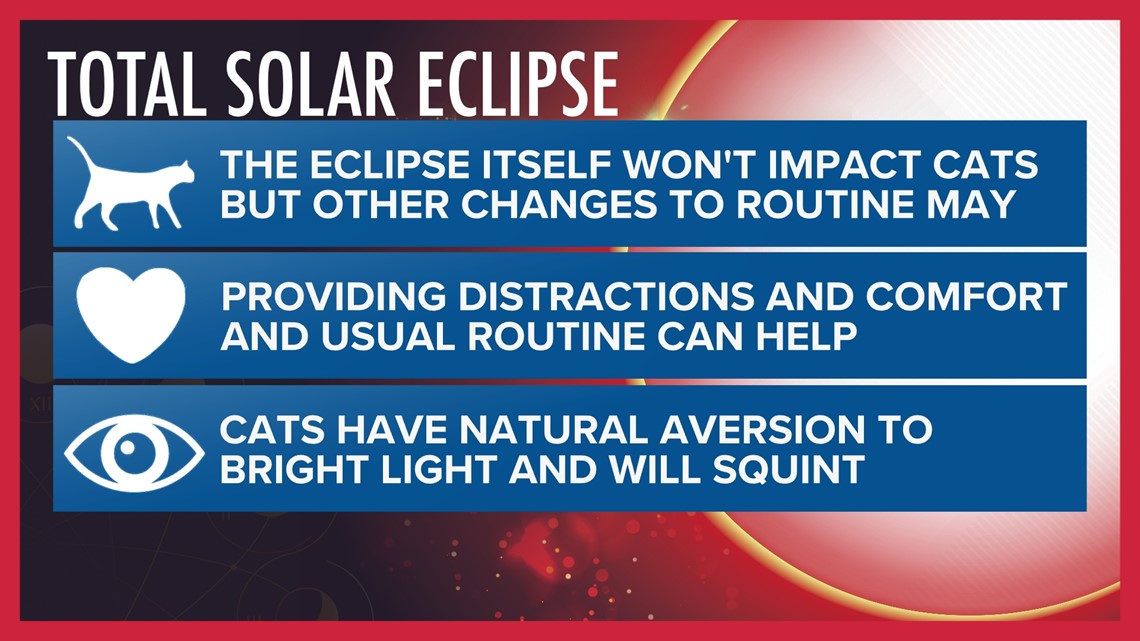
The transition to totality and several minutes immersed in darkness likely won't phase your feline friend, but any changes in routine may bother your cat. Providing treats, comfort, and distractions during the total solar eclipse will help pass the time while mitigating any adverse reactions. While indoor cats will be largely unaffected by the eclipse, outdoor pets may notice the change in daylight.
Wild and zoo animals will be the most highly impacted by the total solar eclipse.
Case studies have shown erratic behaviors in zoo animals during past eclipses. During the 2017 total solar eclipse, the Riverbanks Zoo in South Carolina studied animals in enclosures, noting that 76% displayed atypical behavior during the darkness of the eclipse.
Many of these unusual behaviors were more characteristic of the evening routine, demonstrating the impact of the darkness on the natural circadian rhythm of the animals. For example, one giraffe swayed his body back and forth during the totality of the eclipse, returning to normal behavior once sunlight returned. Most animals returned to normal behavior upon the return to regular daylight.

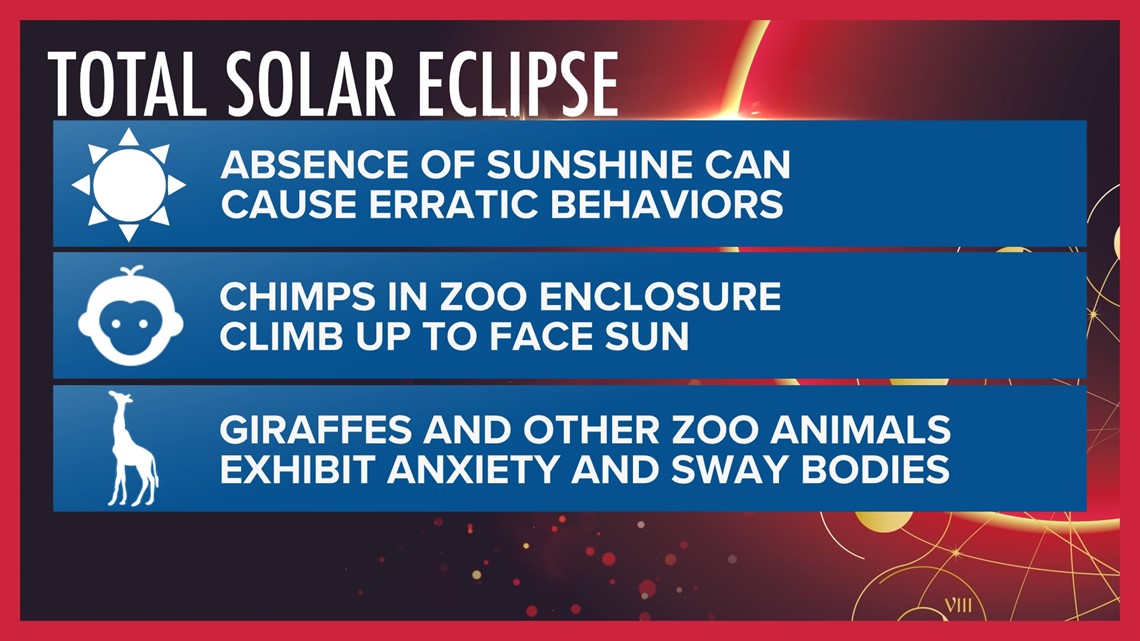
Wild animals exhibit unusual behaviors during totality, often performing evening routines during the middle of the day due to the sudden onset of darkness. Studies on diurnal animals such as squirrels and deer have shown that the arrival of darkness triggers an increase in activity normally associated with the evening hours. Squirrels run around far more during an eclipse and continue this hyperactivity for several hours after.

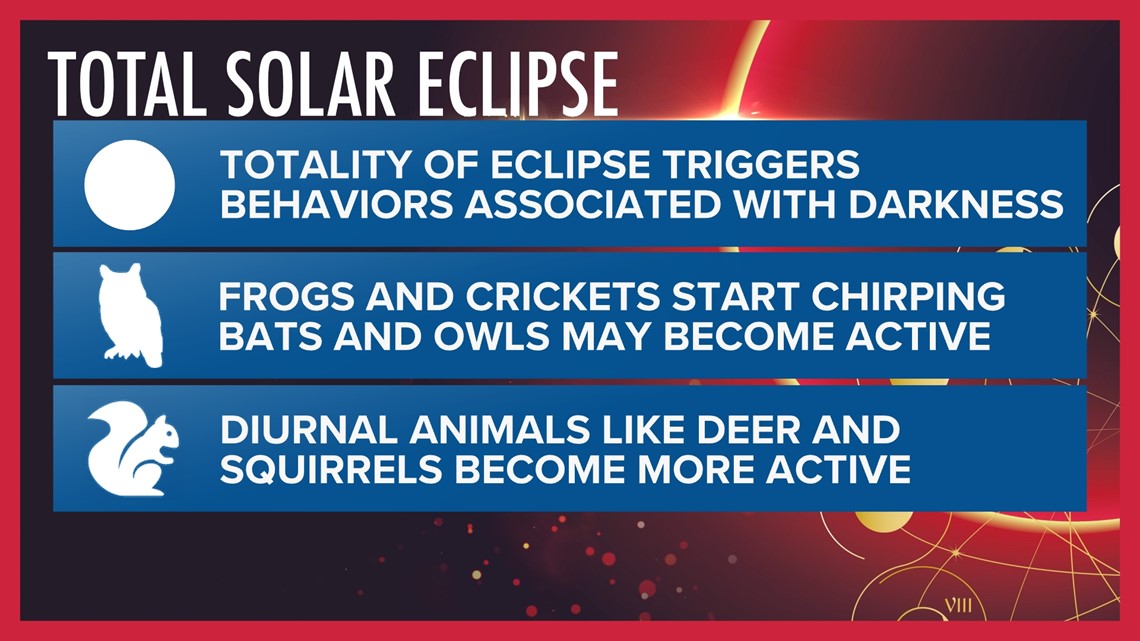
The darkness of totality also impacts nocturnal animals, and frogs and crickets start chirping during totality due to the perception of nighttime. Bats and owls also become active during eclipses upon the onset of darkness. Because wild animals associate darkness with night, they exhibit behaviors associated with nighttime during the eclipse. For more information on how the April 8 total solar eclipse will affect wild animals, see the explanation here.

